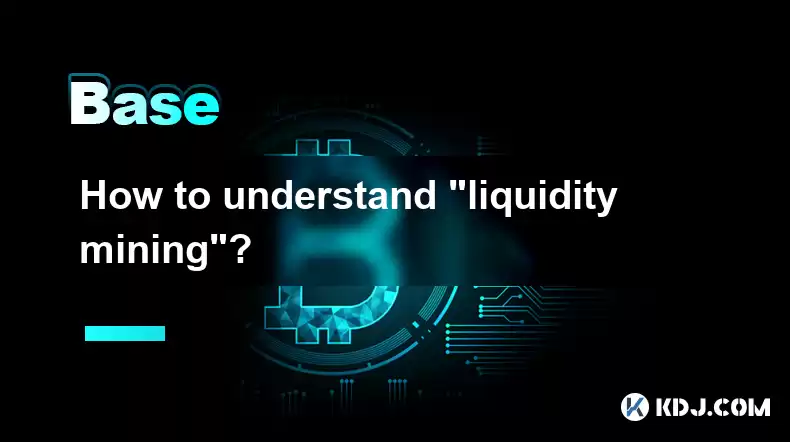-
 Bitcoin
Bitcoin $115100
1.27% -
 Ethereum
Ethereum $3675
2.71% -
 XRP
XRP $2.995
1.45% -
 Tether USDt
Tether USDt $1.000
0.02% -
 BNB
BNB $769.8
2.64% -
 Solana
Solana $168.0
3.25% -
 USDC
USDC $0.9999
-0.01% -
 TRON
TRON $0.3371
1.48% -
 Dogecoin
Dogecoin $0.2051
3.36% -
 Cardano
Cardano $0.7394
2.30% -
 Hyperliquid
Hyperliquid $38.15
0.42% -
 Stellar
Stellar $0.3966
-0.36% -
 Sui
Sui $3.486
2.93% -
 Chainlink
Chainlink $16.72
2.52% -
 Bitcoin Cash
Bitcoin Cash $568.0
4.36% -
 Hedera
Hedera $0.2440
2.59% -
 Ethena USDe
Ethena USDe $1.001
0.04% -
 Avalanche
Avalanche $22.16
2.06% -
 Litecoin
Litecoin $119.1
-0.73% -
 UNUS SED LEO
UNUS SED LEO $8.991
0.04% -
 Toncoin
Toncoin $3.232
-0.39% -
 Shiba Inu
Shiba Inu $0.00001233
2.82% -
 Uniswap
Uniswap $9.717
2.53% -
 Polkadot
Polkadot $3.664
1.85% -
 Dai
Dai $1.000
0.01% -
 Monero
Monero $281.2
-3.89% -
 Bitget Token
Bitget Token $4.350
1.55% -
 Cronos
Cronos $0.1428
5.07% -
 Pepe
Pepe $0.00001050
3.68% -
 Aave
Aave $262.3
3.54%
How to understand "liquidity mining"?
Liquidity mining incentivizes users to provide cryptocurrency pairs to DEXs for rewards (platform tokens or trading fees). However, risks like impermanent loss, smart contract vulnerabilities, and rug pulls necessitate careful platform selection and risk understanding.
Mar 06, 2025 at 03:48 am

Key Points:
- Liquidity mining is incentivizing users to provide liquidity to decentralized exchanges (DEXs).
- It involves locking cryptocurrency pairs in liquidity pools.
- Rewards are typically paid in the platform's native token or a portion of the trading fees generated within the pool.
- Risks include impermanent loss, smart contract vulnerabilities, and rug pulls.
- Understanding the mechanics, risks, and choosing reputable platforms are crucial.
How to Understand "Liquidity Mining"
Liquidity mining is a relatively new concept in the decentralized finance (DeFi) space that has gained significant traction. At its core, it's a method used by decentralized exchanges (DEXs) to incentivize users to provide liquidity to their platforms. This liquidity is essential for DEXs to function effectively, allowing users to seamlessly swap cryptocurrencies. Without sufficient liquidity, slippage (the difference between the expected price and the actual price of a trade) becomes significant, hindering the user experience.
Liquidity is provided by users who deposit pairs of cryptocurrencies into designated "liquidity pools." These pools are smart contracts that automatically execute trades based on the existing price ratio of the assets within the pool. Think of it as a shared pool of funds, constantly facilitating trades. The more liquidity in a pool, the smoother and more efficient the trading process.
The incentive for users to participate in liquidity mining comes in the form of rewards. These rewards are usually paid out in the DEX's native token, a governance token, or a portion of the trading fees generated from the swaps performed within the pool. The amount of rewards received is typically proportional to the amount of liquidity provided and the duration of participation. The rewards can be substantial, attracting many users to participate.
However, participating in liquidity mining is not without risks. One major risk is "impermanent loss." This occurs when the price ratio of the deposited cryptocurrency pair changes significantly compared to when the assets were initially deposited. If the price of one asset increases dramatically while the other decreases, a user might have earned more simply by holding onto their assets instead of providing liquidity.
Another significant risk is associated with the smart contracts powering the DEX. Bugs or vulnerabilities within these contracts can lead to the loss of funds. Thoroughly vetting the platform and its smart contracts is crucial before committing any assets. Additionally, there's always the risk of a "rug pull," where the developers of the DEX abscond with the funds deposited in the liquidity pools.
Choosing a reputable platform is paramount to mitigating these risks. Look for DEXs with a proven track record, transparent code, and active community engagement. Auditing by reputable security firms can also enhance confidence in the platform's security. Understanding the mechanics of liquidity pools and the risks involved is essential before diving into liquidity mining. Remember that the potential for high rewards comes hand-in-hand with significant risk.
Understanding the Mechanics of Liquidity Provision:
To participate, you typically need to connect a compatible cryptocurrency wallet to the DEX. Then, you select the cryptocurrency pair you wish to provide liquidity for. The platform will then show you the required amount of each asset needed to maintain the correct price ratio within the pool.
- You approve the transaction using your wallet.
- You deposit the assets into the liquidity pool.
- You receive liquidity provider (LP) tokens representing your share of the pool.
- You earn rewards based on your share of the pool and the duration of your participation.
- You can withdraw your assets and LP tokens at any time, potentially incurring impermanent loss.
Common Questions and Answers:
Q: What is impermanent loss?
A: Impermanent loss is the potential loss incurred when the price ratio of a cryptocurrency pair in a liquidity pool changes compared to when the assets were initially deposited. It's "impermanent" because the loss only crystallizes when you withdraw your assets from the pool.
Q: How are liquidity mining rewards calculated?
A: Reward calculations vary across different DEXs. They usually consider the amount of liquidity provided, the duration of participation, and the total volume of trades in the pool. Some platforms offer a fixed APR (Annual Percentage Rate), while others have variable reward rates.
Q: Are there any tax implications for liquidity mining rewards?
A: Yes, rewards earned from liquidity mining are generally considered taxable income in most jurisdictions. The specific tax treatment will depend on your location and the type of rewards received (e.g., tokens, trading fees). It's crucial to consult with a tax professional to understand your tax obligations.
Q: How do I choose a reputable liquidity mining platform?
A: Look for platforms with transparent code, a strong community, security audits from reputable firms, and a proven track record. Avoid platforms with little information or those promising unrealistically high returns.
Q: What are the risks associated with liquidity mining beyond impermanent loss?
A: Risks include smart contract vulnerabilities, rug pulls (developers absconding with funds), and regulatory uncertainty. Thorough due diligence is crucial to mitigate these risks.
Disclaimer:info@kdj.com
The information provided is not trading advice. kdj.com does not assume any responsibility for any investments made based on the information provided in this article. Cryptocurrencies are highly volatile and it is highly recommended that you invest with caution after thorough research!
If you believe that the content used on this website infringes your copyright, please contact us immediately (info@kdj.com) and we will delete it promptly.
- Fireverse Token: Igniting a Musical Revolution in Web3
- 2025-08-07 08:27:45
- Ethereum, L2 Withdrawals, and Decentralization: A New Yorker's Take
- 2025-08-07 08:32:33
- Avalanche vs. Ruvi AI: Daily Sales Tell a Story of Crypto Disruption
- 2025-08-07 06:29:35
- DeSoc: The Crypto to Buy Now for a Decentralized Future (and Maybe 43x Gains!)
- 2025-08-07 06:50:16
- Arctic Pablo Coin: Riding the Meme Coin Wave with a Deflationary Twist
- 2025-08-07 07:18:13
- XRP Price Skyrocket? Decoding the Cryptocurrency's Next Move
- 2025-08-07 07:31:50
Related knowledge

What is the difference between CeFi and DeFi?
Jul 22,2025 at 12:28am
Understanding CeFi and DeFiIn the world of cryptocurrency, CeFi (Centralized Finance) and DeFi (Decentralized Finance) represent two distinct financia...

How to qualify for potential crypto airdrops?
Jul 23,2025 at 06:49am
Understanding What Crypto Airdrops AreCrypto airdrops refer to the distribution of free tokens or coins to a large number of wallet addresses, often u...

What is a crypto "airdrop farmer"?
Jul 24,2025 at 10:22pm
Understanding the Role of a Crypto 'Airdrop Farmer'A crypto 'airdrop farmer' refers to an individual who actively participates in cryptocurrency airdr...

What is the difference between a sidechain and a Layer 2?
Jul 20,2025 at 11:35pm
Understanding the Concept of SidechainsA sidechain is a separate blockchain that runs parallel to the main blockchain, typically the mainnet of a cryp...

What is the Inter-Blockchain Communication Protocol (IBC)?
Jul 19,2025 at 10:43am
Understanding the Inter-Blockchain Communication Protocol (IBC)The Inter-Blockchain Communication Protocol (IBC) is a cross-chain communication protoc...

How does sharding improve scalability?
Jul 20,2025 at 01:21am
Understanding Sharding in BlockchainSharding is a database partitioning technique that is increasingly being adopted in blockchain technology to enhan...

What is the difference between CeFi and DeFi?
Jul 22,2025 at 12:28am
Understanding CeFi and DeFiIn the world of cryptocurrency, CeFi (Centralized Finance) and DeFi (Decentralized Finance) represent two distinct financia...

How to qualify for potential crypto airdrops?
Jul 23,2025 at 06:49am
Understanding What Crypto Airdrops AreCrypto airdrops refer to the distribution of free tokens or coins to a large number of wallet addresses, often u...

What is a crypto "airdrop farmer"?
Jul 24,2025 at 10:22pm
Understanding the Role of a Crypto 'Airdrop Farmer'A crypto 'airdrop farmer' refers to an individual who actively participates in cryptocurrency airdr...

What is the difference between a sidechain and a Layer 2?
Jul 20,2025 at 11:35pm
Understanding the Concept of SidechainsA sidechain is a separate blockchain that runs parallel to the main blockchain, typically the mainnet of a cryp...

What is the Inter-Blockchain Communication Protocol (IBC)?
Jul 19,2025 at 10:43am
Understanding the Inter-Blockchain Communication Protocol (IBC)The Inter-Blockchain Communication Protocol (IBC) is a cross-chain communication protoc...

How does sharding improve scalability?
Jul 20,2025 at 01:21am
Understanding Sharding in BlockchainSharding is a database partitioning technique that is increasingly being adopted in blockchain technology to enhan...
See all articles

























































































